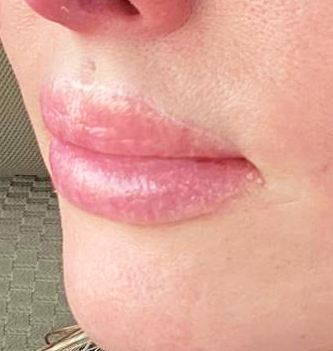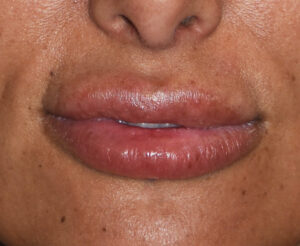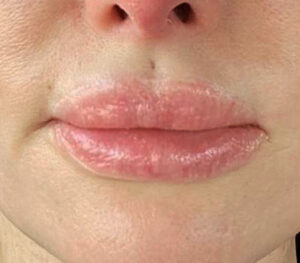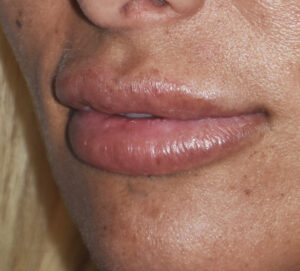Background: Lip augmentation is one of the most commonly performed injectable aesthetic facial procedures. While very effective and instantaneous it does require repeated injections and costs to be maintained. Some patients will eventually develop the phenomenon of filler fatigue and either stop having the injections or search for a permanent surgical alternative.
The two surgical lip augmentation procedures are the well known subnasal lip lift (bullhorn lift) or the lesser done vermilion advancement. (gull wing procedure) These two surgical lip procedures have different aesthetic effects with the subnasal lip lift having a more central upper lip augmentation improvement and is also not applicable to the lower lip. The lip advancement procedure changes the entire lip from one corner to the other and is equally applicable to the lower lip.
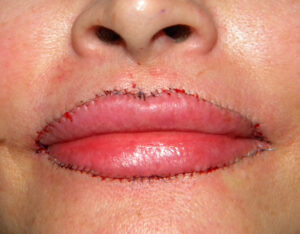
The best way to show these effects is a direct comparison in a patient who has been using injectable fillers and then has subsequently undergone lip advancements…carefully assessing the differences in how each create an augmented lip effect.
Case Study: This female presented with a desire to stop getting synthetic filler injections into the lips and undergo a permanent lip augmentation procedure. While it was impossible to know what her lips looked like before getting injectable fillers, it was not required that she dissolve her fillers before undergoing a lip advancement procedure.
As part of other facial surgeries while under general anesthesia upper and lower lip advancements were done. On the lower lip the vermilion was advanced 3mms and on the upper lip it was a 4mm advancement. She also wanted a rounded central upper lip shape and not a sharply defined cupid’s bow shape. She was not seen again for three years and her long-term results are as shown.
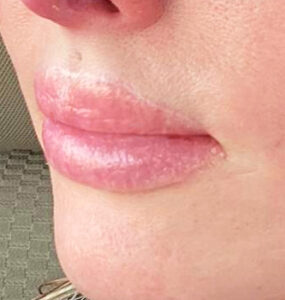
No lip augmentation procedure is perfect. Each one has their aesthetic advantages and disadvantages. For some filler patients, where the concept of a lip advancement would have been inconceivable initially, may warm to the idea if they tire of lip injections. Understanding what the benefits and tradeoffs of the lip advancement procedure is will help one make an educated decision.
Case Highlights:
1) Filler fatigue is an aesthetic phenomenon which occurs when patients tire of the repeated needles and cost of synthetic fillers in the lips.
2) A lip advancement is a permanent surgical relocation of the vermilion-skin edge of the lips through skin removal.
3) The aesthetic tradeoffs for vermilion advancements are a fine line scar and loss of the white roll.
Dr. Barry Eppley
Indianapolis, Indiana

